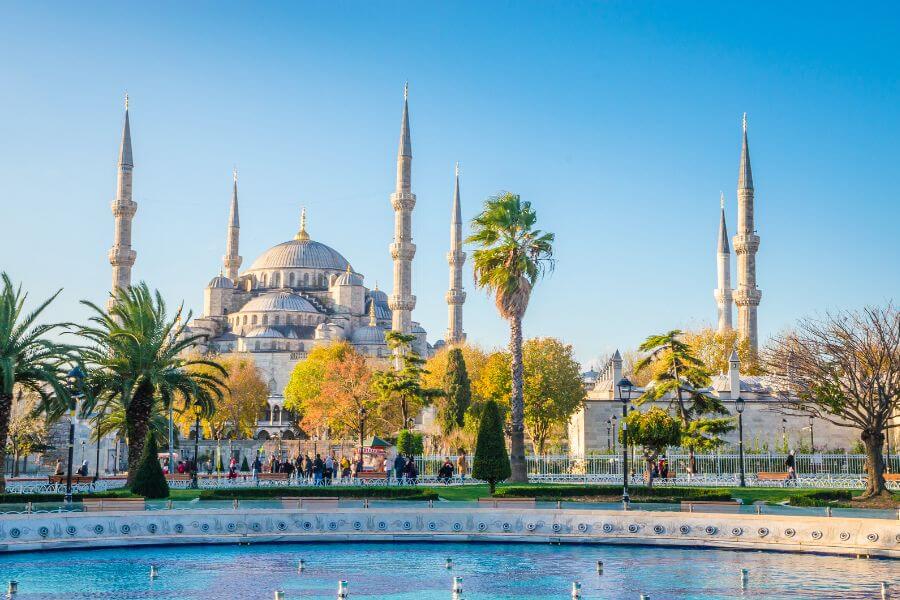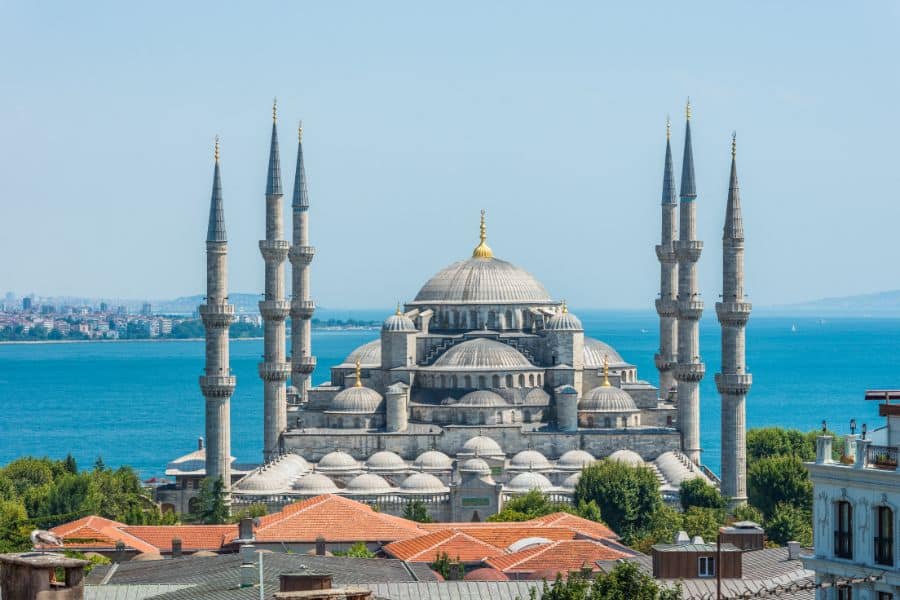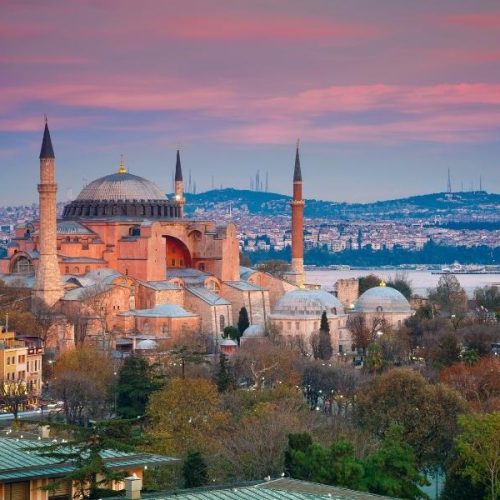Blue Mosque Guide: History, Architecture, and Visitor Tips
The Enigmatic Jewel of Ottoman Grandeur: A Glimpse Inside the Blue Mosque

If you find yourself enchanted by Istanbul tours and all that the city has to offer, the Blue Mosque stands as an unforgettable highlight. Officially known as the Sultan Ahmed Mosque, this iconic monument rises gracefully against the skyline, an architectural masterpiece that blends history, culture, and spirituality. Built in the early 17th century, its intricate design reflects the apex of Ottoman architectural elegance while offering a serene ambiance for visitors and worshippers alike. From its shimmering blue-tiled interior to its cascading domes and six minarets, let’s explore the wonders of this storied landmark with our comprehensive guide.
History of the Blue Mosque

The mosque was commissioned by Sultan Ahmed I and constructed between 1609 and 1616 to rival the neighboring Hagia Sophia. With this ambitious project, Sultan Ahmed sought to symbolize the might of the Ottoman Empire and establish his own legacy. His vision was brought to life by architect Sedefkar Mehmed Agha, a disciple of the renowned Mimar Sinan. Although Sultan Ahmed died just a year after its completion, the mosque remains a lasting testament to his reign, holding both historical and spiritual significance for Istanbul.
Architectural Marvel
The Blue Mosque is named after the more than 20,000 handmade Iznik tiles that adorn its interior. The intricate floral patterns and shades of blue create a mesmerizing effect, emphasized by the sunlight filtering through more than 200 stained-glass windows. The mosque’s main dome, surrounded by smaller semi-domes, is supported by four massive pillars known as “elephant feet,” creating a spacious, airy atmosphere inside.
Externally, the mosque is adorned with six elegant minarets, an unusual feature since most mosques of the era typically had two or four. This architectural choice, initially controversial because it matched the minaret count of Mecca’s Grand Mosque, was later resolved when a seventh minaret was added to the latter. The courtyard, which is almost as large as the interior prayer hall, serves as an impressive transition space, with a central fountain for ablutions.
Visitor Tips for an Enriching Experience
- Dress Modestly: The Blue Mosque is an active place of worship. Ensure your attire covers your shoulders and knees. Women are required to cover their hair with a headscarf, which can be borrowed at the entrance.
- Timing: Plan your visit outside of prayer times to experience the mosque fully. The midday prayer is usually the busiest. Arrive early in the morning for a quieter experience.
- Photography: While photography is allowed, be respectful and avoid using flash or taking pictures of people praying.
- Footwear: You’ll be required to remove your shoes before entering. Bring a bag or use the provided shoe racks to keep your shoes safe.
- Entry Fee: Although there’s no entrance fee, donations are welcome and contribute to the mosque’s maintenance.
- Guided Tours: Consider joining a guided tour to better understand the mosque’s history and architecture. Many Istanbul tours include the Blue Mosque in their itinerary, giving you a chance to explore it with a knowledgeable guide.
Adventurer’s FAQ
Q1: Is the Blue Mosque the same as the Hagia Sophia?
A1: No, they are separate landmarks. The Hagia Sophia is a former Byzantine basilica converted into a mosque, while the Blue Mosque was built centuries later as an Islamic place of worship.
Q2: Can non-Muslims enter the Blue Mosque?
A2: Yes, the mosque is open to visitors of all religions outside of prayer times. Respectful attire and behavior are essential.
Q3: How long does it take to visit the Blue Mosque?
A3: Most visitors spend around an hour exploring the mosque and its courtyard. Consider allowing extra time to relax and absorb the atmosphere.
Top Experiences & Tours in Istanbul
- Guided Tour of Istanbul Landmarks: Explore the Blue Mosque alongside the Hagia Sophia, Topkapi Palace, and Basilica Cistern, diving deep into the city’s fascinating past.
- Bosporus Cruise: Sail between Europe and Asia on a guided cruise, enjoying views of Istanbul’s skyline and iconic landmarks.
- Cappadocia Hot Air Balloon Ride: While not in Istanbul, a hot air balloon ride over Cappadocia’s fairy chimneys is a must-have adventure in Turkey.
- Pamukkale Thermal Pools: Witness the white travertine terraces and bathe in ancient thermal waters for a unique natural experience.
- Ephesus Day Trip: Wander through the ancient ruins of Ephesus and imagine life in this grand city of the Roman Empire.
Captivating Conclusion: The Timeless Serenity of the Blue Mosque
Beyond its visual beauty and historical gravitas, the Blue Mosque offers a sanctuary for reflection amidst the vibrant energy of Istanbul. Whether you’re marveling at its gleaming tiles or standing in awe of its grand architecture, this Ottoman gem is bound to leave a lasting impression. Step inside this serene oasis and immerse yourself in the timeless spirit of Istanbul tours.













